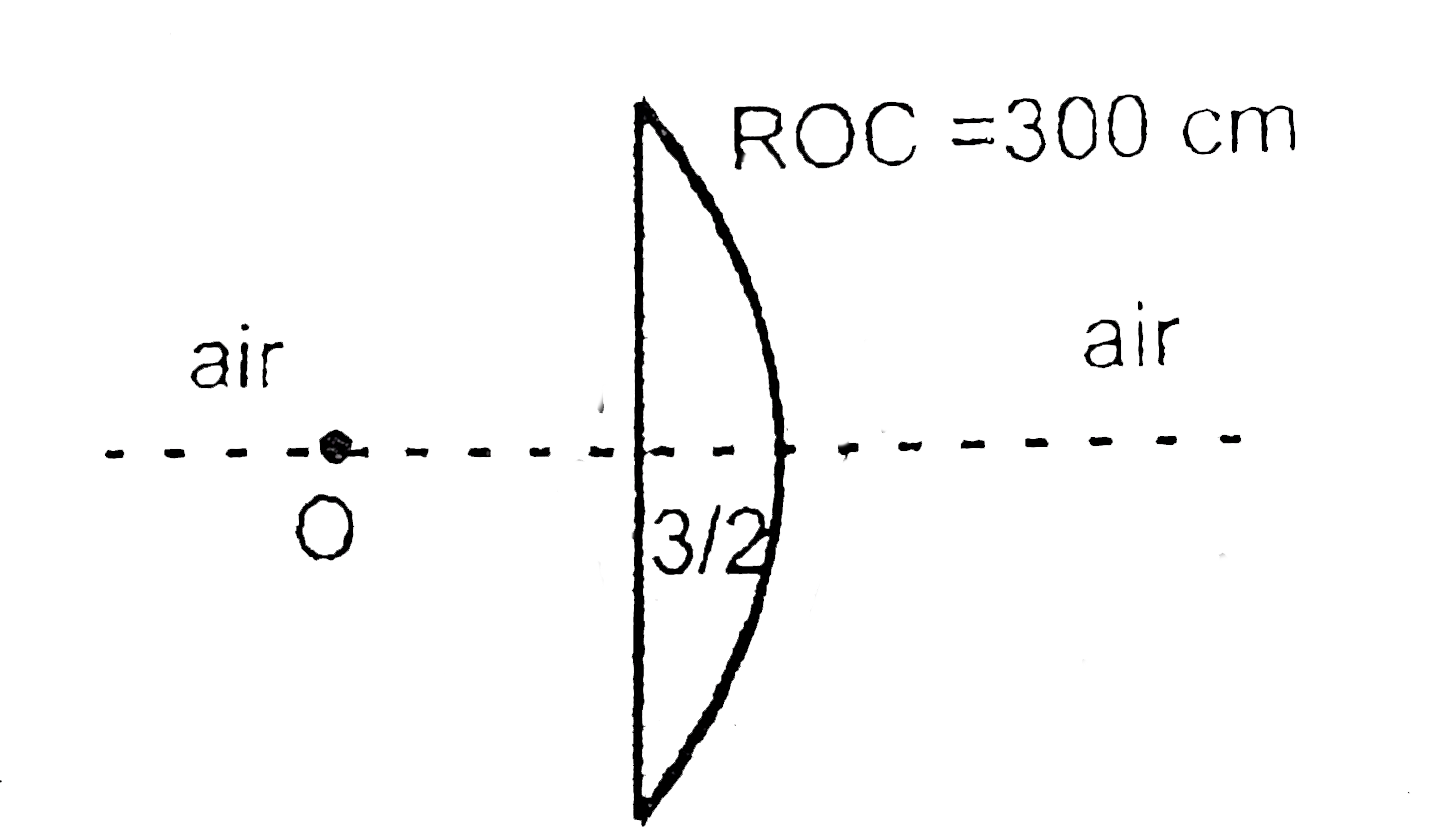Surfaces of a thin equiconvex glass lens have radius of curvature R. Paraxial rays are incident on it. If the final image is formed after n internal reflections. Calculate distance of this image from pole of the lens. Refractive index of glass is μ.
The rays will first get refracted then n-times reflected and finally again refracted. So using for first refraction we haveFor first reflection let us use
Related Solutions
Surfaces of a thin equi-convex glass lens have radius of curvature R. Paraxial rays are incident on it . If the final image is formed after n internal reflections, calculate distance of this image from pole of the lens. Refractive index of glass is .
View SolutionSurfaces of a thin equi-convex glass lens have radius of curvature R. Paraxial rays are incident on it . If the final image is formed after n internal reflections, calculate distance of this image from pole of the lens. Refractive index of glass is .
View SolutionCHC The radius of curvature of each surface of an equiconvex lens is R = 42 cm. Refractive index of the glass = 1.25. If the final image forms after four internal reflections (but not TIR) inside the lens (for paraxial ray incident beam parallel to principal axis) calculate the distance of the image from the lens, in cm.
View SolutionAn equiconvex lens is prepared from a glass of refractive index, 1.5 . The radius of curvature of the surface is 0.5 m. The focal length of the lens is
View SolutionBoth surfaces of a biconvex lens of refractive index glass have the same curvature radius, which is 30 cm. An object of 5 cm height is placed at a distance of 12.5 cm from the lens. Calculate the size of the image formed.
View SolutionAn equiconvex lens has a power of 5 dioptre. If it is made of glass of refractive index 1.5. then radius of curvature of its each surface will be ?
View SolutionAn equiconvex lens is made from glass of refractive index 1.5. If the radius of each surface is changed from 5cm to 6cm, then the power
View SolutionAn equiconvex lens is made from glass of refractive index 1.5. If the radius of each surface is changed from 5cm to 6cm, then the power
View SolutionAn equiconvex lens of refractive index 1.5 has its two surfaces having radius of curvature of 30 cm. A point object has been placed on the principal axis at a distance of 60 cm from the lens. Find the distance of image from the lens formed by the rays which suffer refraction at first surface, reflection at second surface, again a reflection on the first surface and finally a refraction from the second surface.
View Solutionएक उभयोत्तल लेन्स की दोनों वक्रता-त्रिज्याएँ 20 सेमी है तथा लेन्स के काँच का अपवर्तनांक 1.5 है | लेन्स की फोकस-दूरी होगी :
View Solutionएक उभयोत्तल लेन्स की दोनों वक्रता त्रिज्याये 30 सेमी है तथा लेन्स के काँच का अपवर्तनांक है। लेन्स की फोकस दूरी होगी-
View Solutionकाँच (अपवर्तनांक 1.5 ) के एक अवतल लेन्स के दोनों पृष्ठों की समान वक्रता-त्रिज्या R है | 1.75 अपवर्तनांक के माध्यम में डुबाने पर, यह लेन्स होगा :
View Solutionकाँच (अपवर्तनांक, ) के एक उभयोत्तल पतले लेन्स की प्रत्येक वक्रता त्रिज्या 20 सेमी है। लेन्स की अक्ष के समान्तर आपतित प्रकाश किरणें L दूरी पर अभिसारित होंगी जहाँ-
View SolutionA concave lens of glass, refractive index 1.5, has both surface of same radius of curvature R. On immersion in a medium of refractive index 1.75, it will have as a
View Solutionएक उभयोत्तल लेन्स के काँच का अपवर्तनांक एवं इसके प्रत्येक पृष्ठ की वक्रता त्रिज्या 0.2 मीटर है लेन्स की क्षमता है
View SolutionAn image is formed at a distance of 100 cm from the glass surface with refractive index 1.5, when a point object is placed in the air at a distance of 100 cm from the glass surface. The radius of curvature is of the surface is
View SolutionAn image is formed at a distance of 100 cm from the glass surface with refractive index 1.5, when a point object is placed in the air at a distance of 100 cm from the glass surface. The radius of curvature is of the surface is
View SolutionWhen a point object is placed in air at a distance of 100 cm from a glass surface of refractive index 1.5, then an image is formed at a distance of 100 cm from the glass surface. What is the radius of curvature of the surface?
View SolutionWhen a point object of refractive index 1.5 is placed in air at a distance of 100 cm from a glass surface, then an image is formed at a distance of 100 cm from the glass surface. What is the radius of curvature of the surface?
View Solution
Plane surface of a thin planoconvex lens reflects of light, while the curved surface is completely transparent, if final image of after refraction through lens coinsides with the image formed due to partial reflection from plane surface. if distance (in m) between and lens is x then find
View Solution